



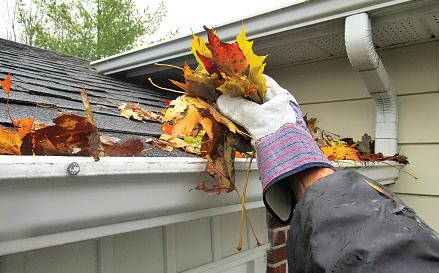

231-889-9644 or 231-425-8957 • vinylmangutterman@yahoo.com Serving TheCommunity For Over 30 Years! Reliable, Honest & Friendly Local Service! Contact us anytime for a free written estimate. We Offer Complete Roofing Services! • Reroofing & New Roof Installation • Seamless Gutter Installation • Gutter Screen Installation • Gutter Cleaning & Maintenance Excellent Exteriors, Inc. All Work Guaranteed in Writing • Licensed & Fully Insured We do it right the first time! HOME Spring & Car Care DEFENSIVE DRIVING refresher course PG. 8 Tips to CONSERVE FUEL on road trips PG. 11 Give your living room A NEW VIBE PG. 6

PAGE 2 • & Car Care
& Car Care
4
Features to consider for a relaxation-themed bathroom remodel
How to recognize when it’s time to replace your windows
How to recognize when it’s time to replace your windows
Give your living room a new vibe
Traditional home hallmarks
Give your living room a new vibe
Defensive driving refresher course
Issues that may arise at certain vehicle mileage intervals
Tips to conserve fuel on road trips




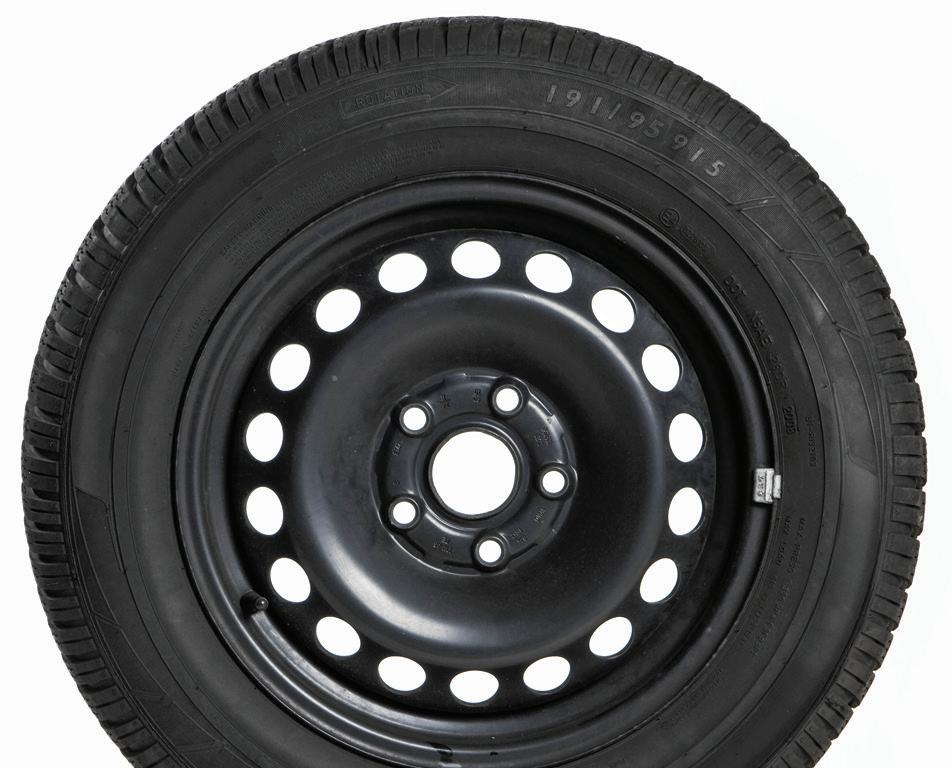
• PAGE 3
What is a vehicle history report? (And how to read one) 4 5 6 7 8 9 10 11 12
Features to consider for a relaxation-themed bathroom remodel
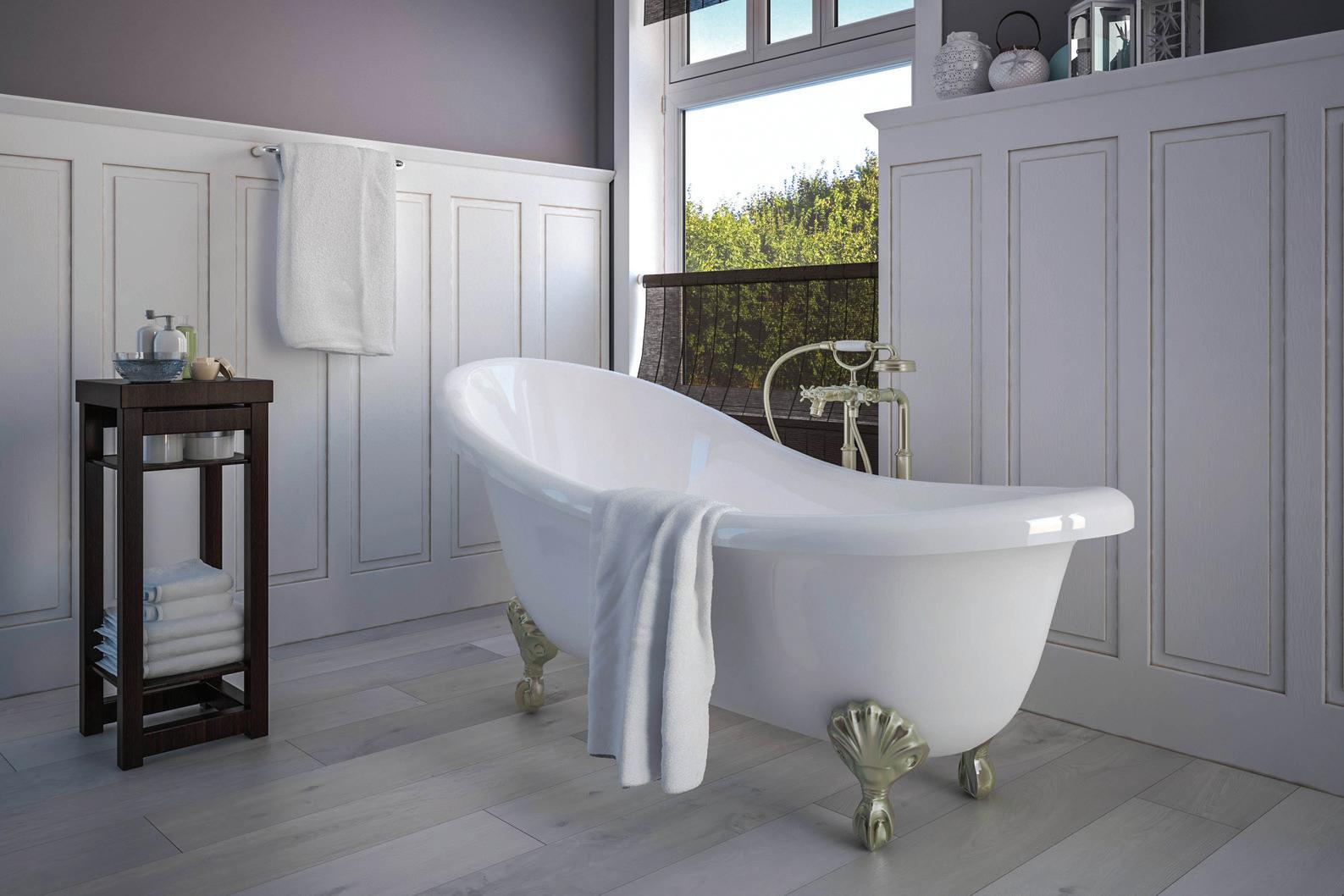
Homeowners want to view their homes as a respite from all that goes on outside their doors. Indeed, turning a home into a residents-only retreat can ensure everyone looks forward to walking through the front the door at the end of the day.
One of the more popular ways to turn a home into one’s own personal retreat is to upgrade the bathroom. A renovated bathroom can completely transform how individuals feel about their homes. The following are some features to consider when remodeling a bathroom with relaxation in mind.
• Open shower: An open shower is a visually stunning addition to any bathroom. Such showers give a bathroom a more open look, thanks in part to the fact that these modern features do not feature a door or require the use of a shower curtain. The result is a clean look that many people associate with a luxury hotel. When speaking with a contractor about an open shower install, homeowners can ask about a half-wall to safeguard against water splashing out of the shower. In addition, a heat lamp can help ensure residents stay warm until they’re ready to leave the bathroom.
• Heated features: Additional features to keep everyone calm and warm can be considered when upgrading the bathroom. Radiant flooring can ensure everyone’s

Turn your bedroom into a relaxing retreat
toes remain toasty, and the installation of such a feature can eliminate the need for floor mats and bath mats that some homeowners may not like. Commit further to the heat theme with a heated towel rack, which is another feature associated with luxury hotels that can be just as enjoyable at home.
• Soaking tub: An open shower creates an instant feeling of luxury, but few things are more suggestive of relaxation than a soaking tub. A long day at school or the office or a day when winter winds are howling outside is made much better with a good a soak. The National Kitchen & Bath Association notes that luxury bathrooms featuring soaking tubs are wildly popular, and that vaunted status is undoubtedly due to the relaxing benefits of a good soak.
• Skylight: Even if the goal of a luxury bathroom is to leave the outside world outside, allowing some natural light inside is a great way to add a little extra calm to the room. Floor-to-ceiling windows may seem appealing in brochures or advertisements, but such features do not create the sense of privacy many people prefer in their bathrooms. One or two skylights can create that sense of privacy and still allow for natural light to enter the room, making this an option that provides the best of both worlds.
These features and more can help homeowners transform their bathrooms into luxurious, relaxing respites from the outside world.
Bedrooms are more than places to lay our heads at the end of the day. Bedrooms serve different functions, and not all are conducive to relaxation. People who use their bedrooms as a work space may find they’re compromising their well-being by introducing activities into the bedroom. The Sleep Foundation says having an office in the bedroom blurs the lines between work and personal life, which can have serious effects on sleep. Rather, people should be looking to turn their bedrooms into relaxing retreats that offer a respite from the outside world.
• Remove blue-light emitting devices. Computers, tablets, smartphones, and other electronic devices emit blue light, which can compromise natural melatonin production in the body that contributes to sleep. Such devices should not be used at night in the bedroom.
• Use a neutral color palette. Neutral color palettes evoke a spa feeling. Walls can be painted white, beige or a light shade of gray. This can help the room feel calming and welcoming.
• Declutter the room. A sense of calm can be achieved simply by removing excess clutter. There is some evidence that the brain is more calm near an empty dresser, desk or clothes hamper. Therefore, removing excessive items from the room is a first step to making a nice retreat.
• Add soft lighting. Adjust the intensity and the color of the lighting in the bedroom. It should be subtle and warming. Dimmers enable homeowners to adjust lighting as needed.
• Install an electric fireplace. There is something to be said for the relaxing effects of gazing into the flames of a fire. A crackling (faux-wood) fire is an added layer of indulgence in a bedroom.
• Add an area rug. Even in rooms with carpeting, an area rug under the bed can further define the perimeter of the bed and add extra plushness underfoot.
• Invest in aromatherapy diffusers. Certain smells can create a relaxing mood. These may be sandalwood, lavender or jasmine. Utilizing their preferred scents, homeowners can employ reed diffusers in their bedrooms to enjoy the aromas of natural oils.
• Used closed storage. Open shelves and visible closet interiors may not hide a mess. Exposure to clutter can contribute to feelings of anxiety. Store items that shouldn’t be on display behind closed doors or drawers.
• Bring in luxury linens. Homeowners should not skimp on comforters, sheets, duvet covers, and pillows for their beds. A cozy bed to dive right into can serve as the centerpiece of a bedroom retreat.
Turning a bedroom into a relaxing space can help individuals sleep better and reduce anxiety.
PAGE 4 • & Car Care
How to recognize when it’s time to replace your windows

Windows are a major component of a home. Window installation professionals will tell homeowners that the average life span of residential windows is between 15 and 30 years.
Most well-maintained products can last 20 years, so homeowners who have windows approaching that age may want to schedule a window assessment and possible replacement.
Replacing windows is a job that requires advanced skill, and this is not a do-ityourself project. There are many qualified professional window installation companies that will work with homeowners to measure, order and install windows that will fit with the style of a home and local weather, all while providing features the homeowner desires.
For those wondering when to replace windows, Pella and Renewal by Andersen, two of the premiere window manufacturers, offer these guidelines.

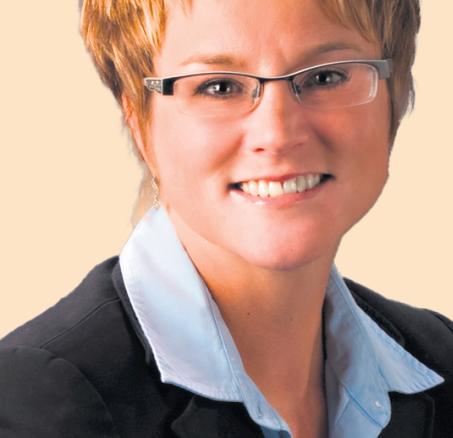
• Difficulty opening and closing windows. A window that does not operate as it should can aggravate homeowners. If windows are sticking shut or cannot be securely closed, it’s probably time for something new.
• There’s apparent window damage. Accidents happen, and if a rock is kicked up from a lawnmower and cracks a window or if spring baseball practice has gone awry with an errant throw, windows may require replacement.
• Drafts in the window are common. If heating and cooling systems are working overtime, drafty, poorly insulated windows could be to blame. Various agencies can perform energy efficiency tests in a home. Windows that are determined to be the weak spots should be replaced.
• Dated windows are present in the home. Older windows may pose safety hazards, especially those in older homes. A larger window may be needed
to comply with fire safety codes allowing for window egress. Dated windows also may simply look “old” and compromise the aesthetics of a home.
• Outdoor noises are noticed quite readily. Newer windows can help reduce noise transmission. So those leaf blowers, airplanes, barking dogs, and kids playing basketball up the street won’t disturb homeowners as they try to enjoy some peace and quiet indoors.
• Fading indoors is noted. Windows that do not feature low-emissivity (Low-E) glass coatings will not block UV rays. Those rays can cause fading to wood floors and furniture or pretty much anything the sunlight touches. Replacing existing windows with Low-E coating alternatives can safeguard belongings and improve window efficiency.
Window replacement may be necessary when existing windows are showing signs of aging or damage.

• PAGE 5 12150 Seventh Street, Bear Lake NorthstarAutomotiveInc.com 864-3139 Nor thst r Automotive, I nc. Bear Lake , MI • Computer Diagnosis Brakes • Lube - Oil - Filter Home & auto. Easy & affordable. Call me for a quote today A ge nt 3 0 6 W Pa rkda l e Ave Ma niste e, M I 49 6 6 0 Bus: 231 -723 - 9 9 0 5 w w w mar ystu rd eva nt.com Mar y Sturdevant Ins Agcy State Farm Mutual Automobile Insurance Company Sta e Farm Indemnity Company, Sta e Farm Fire and Casualty Company State Farm General Insurance Company Bloomington, IL State Farm County Mutual Insurance Company of Texas State Farm Lloyds Richardson, TX State Farm Florida Insurance Company Winter Haven, FL
Give your living room a new vibe
An “out with the old, in with the new” mentality can extend to people’s visions for their homes. A home in need of repair or renovation can serve as a catalyst to take inventory of personal style and help make interior spaces reflect one’s unique vibe.
A living room can grow stale over time and often serves as a catch-call for clothing, blankets, gadgets, and other items. Upon recognizing a living room has seen better days, individuals may decide it’s time to give the space a new vibe. That transformation can start with these strategies.
Organize first
Clutter frequently is the culprit behind a living room that may not give off the vibe individuals desire. As families grow and people add belongings, space may be at a premium. Less is more has never been a more important concept. Remove extraneous items before purchasing

new furniture or transitioning to a new design. You may even want to remove everything and start from scratch before reintroducing desirable elements to the space.
Seek the assistance of professionals
Some people are adept at decorating and designing spaces. But just as you wouldn’t perform your own medical procedures, you should leave jobs like interior design and renovations to the professionals.
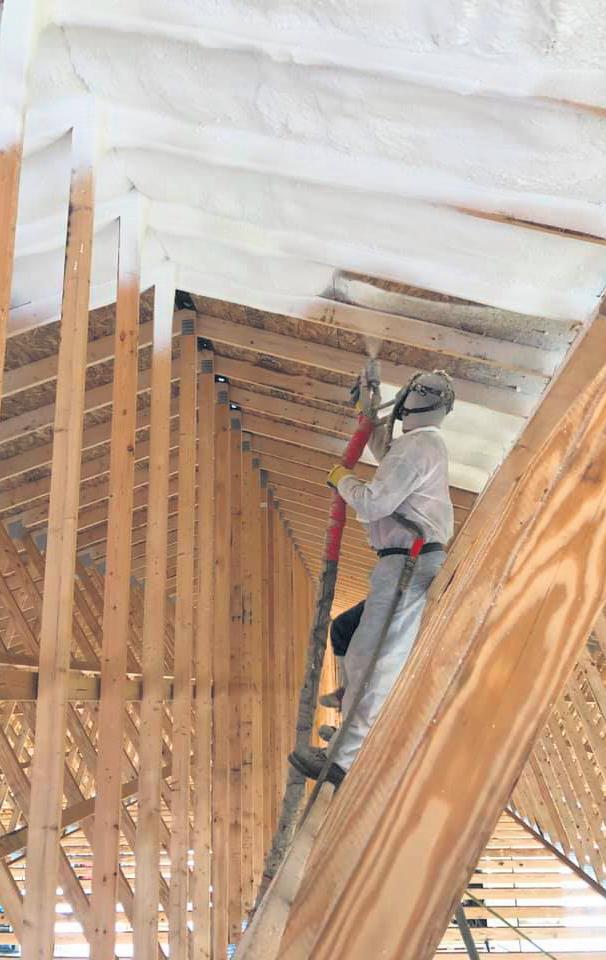
Hiring a professional interior designer and contractors can really bring a living room together in ways homeowners may have never imagined. These pros can build off of your ideas and truly create a space that may be worthy of a magazine spread.
Promote wellness
You may want to consider adding natural materials in the design to promote well-being. Eco-friendly furnishings, raw fibers and organic textures will create an environment from sustainable choices. Plenty of plants also can create
a welcoming environment that helps you surround yourself with positive energy and the items you love.
Light it up
One of the easiest ways to transform a room’s vibe is to utilize lighting. Change draperies to allow more natural light to shine in. Consider additional windows or skylights if yours is a particularly dark home. If you desire to create a more vivid or cozy ambiance, use a combination of accent, task and supplemental lighting in the space so there are no dim corners.
Create an industrial or urban vibe
Industrial-chic design celebrates the bones of a building. It’s what makes city lofts so appealing, with their exposed beams and brick. Even those who live in suburbia or out in the country can give a living room this look with subtle nods to the style. Unadorned windows, clean lines on furniture, oversized, gallery-style art, and metal accents can add touches of this popular look to your home.
Revamping a living room doesn’t have to be difficult. With an idea in place and some professional touches, an entirely new vibe can be achieved.

PAGE 6 • & Car Care Create a More Comfortable & EnergyEfficient Home Keeping your house at the right temperature will save you money on energy bills. Most will see a 10-15% reduction in their heating and cooling costs. The pros at Fresh Coast Foam will get the job done right. Family owned and operated in Irons,MI. 231-510-9513 www.freshcoastfoam.com
Traditional home hallmarks
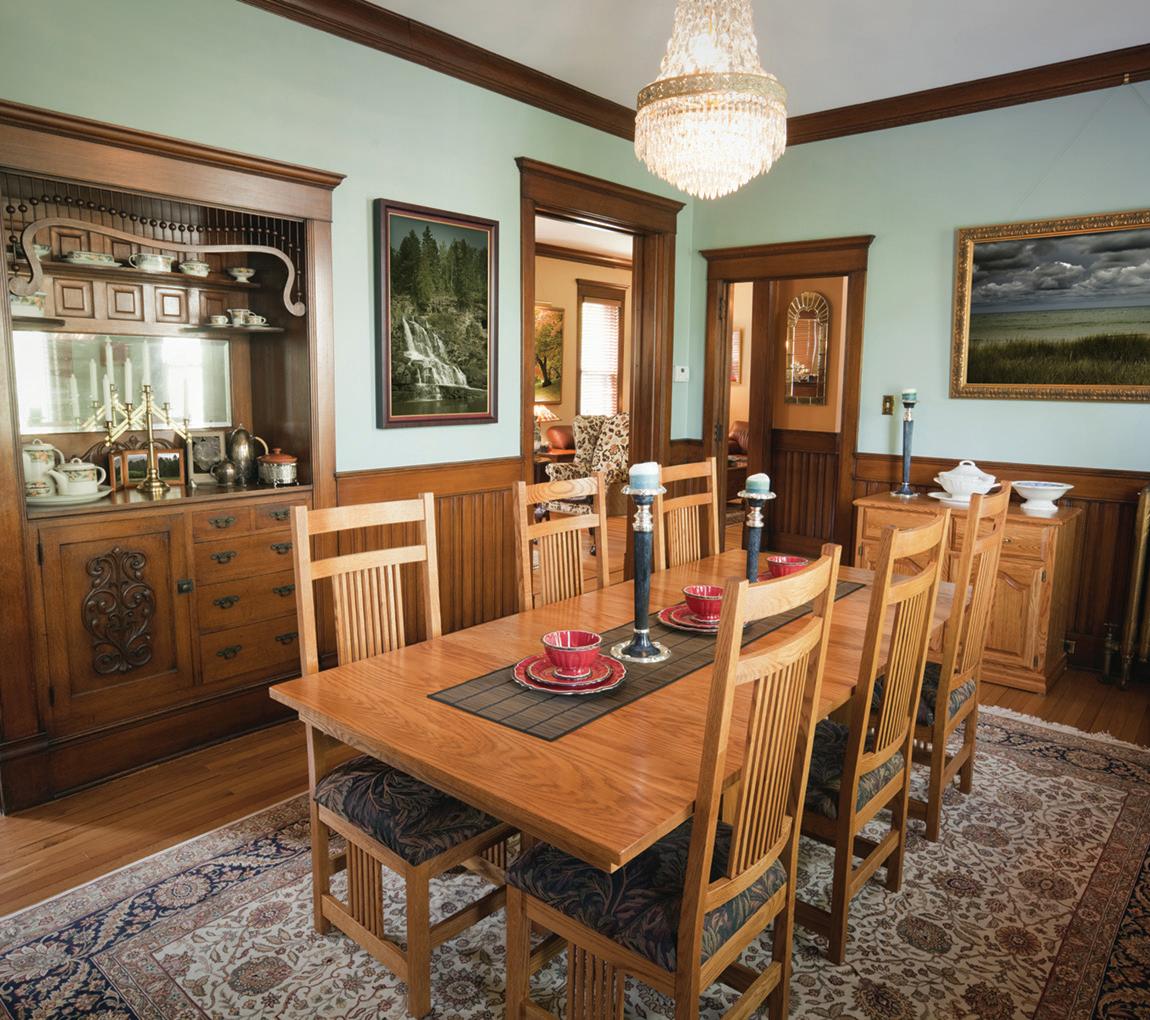
Ahome can say a lot about its inhabitants. Perhaps that’s one reason why renters and homeowners alike spend so much time and expend so much effort on the various design components of their homes.
Home styles are as diverse as the people who live in the homes. Each design style has its proponents, but traditional style homes are among the most enduring designs. The popularity of traditional style homes has endured for centuries. And though homes built in the twentieth and twentyfirst centuries might be vastly different from those constructed in the 1600s and 1700s, they still include characteristics of homes one might have found back in colonial times. But it’s also important to note that the notion of “traditional” has changed, and some may now see homes built more than 50 years ago as traditional. That’s an important distinction to keep in mind when working with
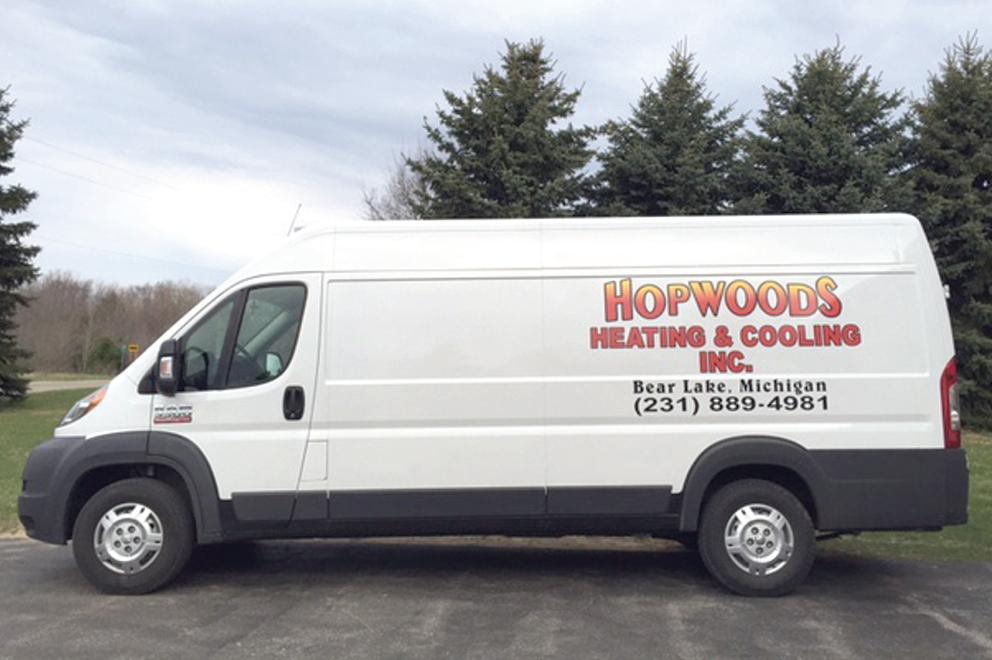

contractors and interior designers, as homeowners who prefer traditional should not hesitate to share how they define that style. As individuals shop around for new homes or seek inspiration before redesigning their existing spaces, they can consider these hallmarks of traditional-style homes.
• Color: According to the home renovation experts at HGTV, traditional-style homes are not typically associated with the muted color palettes common to more modern design schemes. Traditional styles utilize color throughout the home, and each color of the rainbow can be utilized if individuals so desire. Though neutral colors are found in traditional-style homes, Architectural Digest notes they are typically accompanied with pops of bold colors in jewel tones.
• Classic decor: It might be an oversimplification to suggest modern and traditional are at opposite


ends of the design spectrum, but traditional-style homes lean on classical decor like chandeliers and bookcases, each of which is unlikely to be found in a modern home.
• Architectural details: Certain architectural details also are commonly found in traditional-style homes. Wainscoting and crown molding, which harken many back to the style’s centuriesold roots, are some hallmarks of the traditional style.
• Defined spaces: Open concept floor plans have become very popular in recent years, but traditionalstyle homes do not feature open floor plans. Living rooms and dining rooms (which are used exclusively as dining rooms) are defined spaces in traditional-style homes, which also tend to have all bedrooms on the second floor or higher. The traditional design style has endured for centuries. That serves as a testament to the appeal of a style that will seemingly always have a place to call home.



• PAGE 7 • Specializing in High Efficiency Fur nace • Replacement & Retrofit • Radiant In Floor Heating • 96% Efficient Water Heaters • 96% Efficient Fur naces • 96% Efficient Boilers • Heating & Cooling Services • Repair & Preventive Maintenance (231) 889-4981 w w w.HopwoodsHeatingAndCoolingInc.com
Defensive driving refresher course
Driving affords people the freedom to travel wherever they desire so long as they have access to a reliable vehicle. However, soon after the “new car smell” of that freshly minted license wears off, motorists may realize that many roads can be chaotic and populated by erratic drivers. Defensive driving strategies can help any motorist feel safe on the road, and it can help anyone to revisit a defensive approach from time to time.
What is defensive driving?
The insurance firm Progressive notes defensive drivers employ techniques that can reduce accident risk. These techniques promote alertness, a recognition among drivers of the significance of controlling what they can, and a commitment to always expect the unexpected. The crux of defensive driving is realizing not everyone else drives well. Aggressive drivers are hazards, as are those who are distracted behind the wheel. Driving defensively serves to mitigate some of these hazards.
All good kids like milk?
There are various defensive driving techniques, and various driving schools or organizations may promote their own. Harold L. Smith was a World War II veteran who founded the Smith System® driving school in 1952. Smith felt that driving schools only taught how to mechanically operate vehicles, not how to drive safely to avoid accidents.

Smith’s system uses the mnemonic “all good kids like milk,” which refers to:
• Aim high in steering®: Look ahead a minimum of 15 seconds to scan the road. At 60 miles per hour you want to look a quarter-mile ahead. This helps you make timely decisions.
• Get the big picture®: Keep a minimum following distance by picking a fixed object ahead and making sure you’re at least seven seconds away. In addition, scan mirrors every few seconds.
• Keep your eyes moving®: Avoid focusing on one object for more than a few seconds. Driving on autopilot or under “highway hypnosis” is dangerous.
• Leave yourself an out®: The “space cushion” terminology is something you may have heard. You always want to anticipate potential hazards and ensure a way to avoid them; otherwise, you may be
forced to make a quick, and potentially dangerous, decision.
• Make sure they see you®: Drivers who can’t see you may make their own maneuvers thinking the coast is clear. Try to make eye contact with other drivers, use headlights, your horn, and signal your intentions.
Take a defensive driving course
You can follow the Smith method outlined here or enroll in a defensive driving course to further hone your skills behind the wheel. Also, it may be worth it to check with your insurance provider to see if taking a defensive driving course will qualify you for a discount on your automotive policy.
Defensive driving is important, as it can keep drivers and their passengers safe and potentially prevent accidents and injuries.




PAGE 8 • & Car Care You Take Pride in Your Ride. We Take Pride in Our Work. We do Auto Detailing for Cars, Trucks, SUV’s, Vans, Motorcycle’s, ATV’s Boats and Semi Trailer clean outs available with consultation Crystal Lake Auto Detailing 520 Parkview Ln, Frankfort 231-871-8704 Auto Service Center 414 Parkdale • Manistee • 231-723-8329 www.avenuetireandser vice.com We service both domestic & foreign vehicles. We offer many service to keep your car in top condition. We will provide you with an easy to understand estimate before beginning any services. Ask us about options to keep auto repair costs low or upgrades to keep your car in top shape. We stand behind all of our work with a guarantee you can count on!
Issues that may arise at certain vehicle mileage intervals
Modern automobiles are technological marvels.
As advancements in automotive technology have made cars more reliable than ever, drivers may feel as though vehicle ownership also is more hands-off than ever before. Though it’s true built-in diagnostic technology is designed to alert drivers when issues arise, it can still benefit motorists to recognize when certain issues may arise.
Cars and the people who drive them are different, so mileage intervals are not always the best measuring stick for maintenance issues. However, the following rundown can serve as a guidebook for drivers who want to know what to expect at various mileage intervals.
• 30,000 miles: The experts at Auto Trader note that disposable engine air filters usually last between 15,000 and 30,000 miles. If it’s been around 30,000 miles since the engine air filter has been replaced, now is a good time to replace this important part, which prevents
components like dirt and debris from getting into the engine. This also might be a good time to replace the fuel filter, which prevents debris from clogging fuel injectors.
• 50,000 to 60,000 miles: It’s around this time that drivers may need to replace their vehicle batteries. Little-used vehicles may need a new battery much earlier, as lengthy periods of little or no use adversely affect the life expectancy of vehicle batteries. Brakes also may need to be replaced around this time, as the experts at AutoZone® note that most drivers get between two and five years out of a set of brake pads. If that sounds like a significant disparity, it is, and that’s because driver behavior is a significant variable affecting the life of the pads. Drivers who brake hard will likely need to replace their brake pads with greater frequency than drivers who brake slowly.
• 50,000 to 90,000 miles: As noted, there is no uniform
guideline governing when vehicle components will need to be replaced. Hoses are a good example of that, as recommendations regarding when to replace hoses range from 50,000 to 90,000 miles. That’s a significant gap, but drivers can be on the safe side and start discussing the status of their hoses with their mechanics around the 50,000 mile marker. It’s unlikely the hoses will make it all the way to 90,000 miles before they need to be replaced, but drivers can keep that mileage marker in mind and aim to replace the hoses before that point even if no issue has arisen. Timing belts also tend to fail between 80,000 and 100,000 miles, so this is another part to consider replacing as a vehicle reaches this point.
These mileage markers are not set in stone, and should only serve as a guideline for drivers who want to stay ahead of vehicle repairs. Drivers also are urged to discuss any additional changes that might be necessary with their mechanics during routine maintenance appointments.

Drivers undoubtedly have noticed their vehicles need less frequent oil changes than cars once required. The longtime standard oil change interval of once every 3,000 miles no longer applies, and that’s thanks to the pivot away from conventional oil to synthetic oil. The molecular structure of synthetic oil and its ability to perform better at extreme temperature means drivers can now drive significantly longer distances between oil changes. In fact, Car & Driver notes that synthetic motor oils provide better startup performance and flow at temperatures down to minus-40 Fahrenheit and then endure extremely high temperatures without oxidizing, thickening or turning black. The reason synthetic oils need less frequent changes is that they can maintain their superior properties two to three times longer than conventional oils. Though each vehicle manufacturer is different and drivers are urged to consult their owner’s manuals regarding synthetic oil change interval recommendations, it’s not uncommon for modern vehicles to range between 5,000 and 7,000 miles before they need an oil change. Some synthetic oil manufacturers even note their products can last more than 10,000 miles.




• PAGE 9 gini@c21nor thland.com 231.690.0852 For all your Real Estate needs #JustcallGini Manistee Area Thanks for suppor ting me in over 18 years of helping clients, Buy, Sell or Lease t heir homes. Selling a home can be easy if you give me a call. I have a team to assist in organizing, selling contents, professional photos and successful pricing to make it a seamless transaction Looking to buy a home in Manistee? Give me a call, from 1st time Home Buyers to Million $ Vacation homes. I’ve assisted over 500 families find a home in #Manisteet hePlacetoBe Gini Pelton Nor t hland Your “Linke” to Professional Auto Body Repair • Foreign & American Made • Precision Color Matching 423 Parkdale Ave. • Manistee (on the corner of US-31 & M-55) www.linkesbodyshop.com Ser ving Manistee Area Since 1941 FREE ESTIMATES 231-723-7206 423 W. Parkdale Ave • Manistee
Tips to conserve fuel on road trips

Road trips remind drivers of just how thrilling the open road can be. For millions of individuals, nothing provides a sense of escapism as effectively as the open road.
Though road trips can be liberating, they do not allow a complete escape from reality, something drivers realize when the time comes to fill up the gas tank. Gas prices fell considerably by mid-December 2023, dipping to an average of $3.12 per gallon of regular by the middle of that month according to data from AAA. That marked a significant decline from just a month earlier, when prices for a gallon of regular gas averaged $3.36. But drivers know prices can spike just as quickly as they drop, so it pays dividends to recognize strategies to conserve fuel. Such strategies can be especially beneficial for drivers about to embark on a road trip.
• Slow down. Pushing the pedal to the medal might be a romantic, if unsafe, notion of how to drive on a road trip. But that approach can be costly at the pump. According to the U.S. Department of Energy, every five miles per hour motorists drive over 50 miles per hour is the equivalent of paying $0.30 more per gallon of gas. That estimate is


based on a gallon of gas costing $4.32, but drivers can still conserve a considerable amount of fuel by slowing down.
• Steer clear of city driving. The stop-and-go traffic that is a hallmark of city driving can compromise fuel efficiency. The Office of Energy Efficiency & Renewable Energy notes that rapid acceleration and braking, which is hard to avoid when driving through cities with lots of stoplights and pedestrians, can lower gas mileage by as much as 40 percent.
• Avoid rooftop cargo. Rooftop cargo boxes might be a necessity when a car is packed with passengers. But these luxuries come at a steep cost.
A study from the Oak Ridge National Laboratory found that rooftop cargo boxes can reduce fuel efficiency by as much as 17 percent on the highway and as much as 25 percent on interstates where drivers drive at speeds between 65 and 75 miles per hour. The DOE reports that rear-mount cargo boxes are much more efficient, so drivers looking to conserve fuel may want to pack light and/or opt for rear-mount cargo boxes instead of rooftop boxes.

S• Utilize cruise control. The auto manufacturer Kia estimates that utilizing the cruise control function on a vehicle can save drivers as much as 14 percent on fuel. Cruise control is not advisable when driving in cities or on roads with stoplights. However, when driving on interstates, driving at the same continuous speed helps drivers avoid constant accelerations and decelerations, which compromise fuel efficiency.
When the open road beckons, drivers can make their road trips more affordable by implementing various strategies to conserve fuel.
port utility vehicles (SUVs) may never be as fuel-efficient as more traditional cars, but one segment of the SUV market has made great strides in relation to fuel efficiency since the turn of the century. Data from the Environmental Protection Agency’s 2020 EPA Automotive Trends Report indicated the small SUV segment had the greatest improvement of fuel economy among all vehicle segments between 2000 and 2020. Average fuel economy among small SUVs increased by 65 percent during that period, which began with such vehicles getting 17.9 miles per gallon of gas and ended with them averaging 29.5 miles per gallon. The Chevrolet Equinox FWD, the Ford Edge FWD, the Hyundai Kona FWD, the Jeep Cherokee FWD, and the Mazda CX-30 2WD are among the vehicles that are categorized as small SUVs.
PAGE 10 • & Car Care
What is a vehicle history report? (And
how to read one)
The value of a new vehicle depreciates considerably the moment it is driven off a dealership lot. Bankrate reports that a car loses between 9 and 11 percent of its value the moment it leaves the dealership, and over the first five years a vehicle loses roughly 40 percent of its value.
The fact that vehicles are expensive and lose value so quickly compels some consumers to consider preowned cars and trucks as more affordable and financially savvy options. However, preowned vehicles come with their own risks, such as the potential for hidden problems. A vehicle history report is something every prospective preowned vehicle buyer should ask to see before buying a car or truck. Sometimes these reports are a free service offered by a seller, particularly an established dealership. But buyers may have to pay to get a vehicle history report, which typically cost between $25 and $40.
Kelley Blue Book says a vehicle history report is a collection of records that provide information on a used vehicle that are pulled from thousands of sources. A report may be referred to as a “Carfax®,” which is the name of a firm that offers these types of reports. However, Car & Driver indicates that Carfax® only provides information that was reported, so their reports may not paint the full picture. A typical vehicle history report will indicate, among other things, how many people owned the car; whether or not the vehicle has been in a collision; the mileage on the vehicle; if the car is current on inspections; and if the vehicle is branded a lemon.
Consumers should know what to look for when reading a report. While some of the data will be obvious, there are some less apparent points to consider as well.
• Title: Make sure the vehicle never had a salvage title or other title problems. A salvage title, for example,




is a vehicle that has been declared a total loss from collision, flood, theft, fire, or vandalism. Additional issues may arise when the seller’s name is not on the title. A rebuilt title means the vehicle was once salvaged but then refurbished.
• Ownership: The vehicle history report will indicate how many owners have had the vehicle. A car that has changed hands many times may not be the best investment.
• VIN: It’s important to make sure the vehicle identification number (VIN) for the vehicle matches what is on the vehicle history report.
• Location of sales: The locations where the vehicle was used and stored also is important. For example, some may be hesitant if a vehicle was kept by the coast due to moisture and salty conditions that could cause premature wear and tear on components.
• Fleet vehicle: Carfax says that the history report will indicate if the
vehicle spent time in a fleet. This includes rental vehicles, government vehicles, company vehicles, and dealer vehicles. A fleet vehicle may have had many different drivers over a short period of time.
Auto City suggests paying close attention to the most recent parts of a vehicle’s history. If there have been multiple changes in ownership or increased service records for certain parts, that may indicate there is something seriously wrong with the car.
Vehicle history reports are another tool buyers can use when vetting preowned cars or trucks.



• PAGE 11 Shopping around for car insurance? Don’t. WEBBER INSURANCE AGENCY Benzonia • 231.882.9655 info@webberinsurance.us Let your local independent agent shop for you and find the coverage you need. ANNUAL Spring Sale Haglund’s Floor Covering Inc. 231-723-9415 308 Parkdale Ave., Maniste e Mon-Fri 8:30am - 5:30pm • Sat 9:00am - 12:00pm Celebrating 76 years in Business!












PAGE 12 • & Car Care HONOR 10635 Main S t., Honor Ph: 231-325-4551 ONEKAMA 4847 Main S t., Onekama Ph: 231-889-3456 $25 DELIVER OCAL DELIVERY FEE BIG & SMALL Floor to rafter, we’re stocked with hardware, tools, lumber and building supplies for all the jobs on your spring to-do list. Your Home for Spring Projects



























































